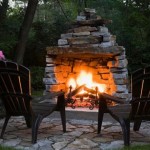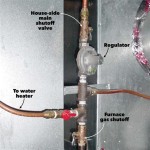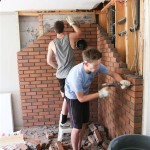Gas Fireplace Inserts: Understanding Installation Costs
Gas fireplace inserts have become increasingly popular as a way to modernize existing masonry fireplaces and provide efficient heating solutions. These inserts, which are designed to fit into an existing fireplace opening, offer numerous benefits, including improved energy efficiency, enhanced safety features, and convenient operation. However, before investing in a gas fireplace insert, it's crucial to understand the associated installation costs, which can vary depending on several factors.
The total cost to install a gas fireplace insert typically encompasses several components, including the price of the insert itself, necessary venting materials, labor charges for installation, and potentially additional costs for permits, gas line modifications, or other unforeseen circumstances. This article will delve into each of these cost factors, providing a comprehensive overview to help homeowners budget effectively for their gas fireplace insert installation.
Key Factors Influencing Gas Fireplace Insert Installation Costs
The final cost of installing a gas fireplace insert is not a fixed number. It is dynamic and influenced by different elements. Understanding these factors is crucial for homeowners to get an accurate estimate and avoid unexpected expenses during the installation process.
1. The Cost of the Gas Fireplace Insert
The gas fireplace insert itself represents a significant portion of the overall installation expense. Prices can vary widely depending on several factors, including the insert's heating capacity (measured in BTUs), the aesthetic design, the features offered (such as remote control operation or programmable thermostats), and the brand reputation. Smaller inserts designed for smaller rooms generally have lower price points compared to larger, more powerful models intended for heating expansive living spaces.
Gas fireplace inserts are available in a range of styles, from traditional log sets to contemporary glass media options, and the chosen style will influence the price. Models with intricate detailing, realistic flame patterns, or advanced control systems typically command higher price tags. Additionally, certain brands are known for their superior quality, durability, and energy efficiency, and their products may be priced accordingly.
When considering the cost of the insert, it is important to focus on the long-term value proposition. While a lower-priced insert may be tempting initially, it is crucial to assess its energy efficiency rating, warranty coverage, and expected lifespan. A more efficient insert may result in lower heating bills over time, and a comprehensive warranty can provide protection against potential repairs or replacements. Selecting a high-quality insert from a reputable brand can ultimately provide a better return on investment.
2. Venting Requirements and Associated Costs
A gas fireplace insert requires a proper venting system to safely exhaust combustion byproducts outside the home. The type of venting system needed will depend on the specific model of the insert and the existing chimney setup. There are two primary types of venting systems used with gas fireplace inserts: direct vent and B-vent.
Direct vent systems are sealed combustion systems that draw air from outside the home for combustion and expel exhaust gases directly outdoors through a coaxial vent pipe. This type of venting system offers several advantages, including improved energy efficiency and reduced risk of backdrafting. Direct vent systems are typically more expensive to install than B-vent systems, as they require specialized vent pipes and fittings.
B-vent systems, also known as natural vent systems, rely on the natural draft of the chimney to exhaust combustion gases. These systems utilize a single-wall vent pipe that runs up the existing chimney. B-vent systems are typically less expensive to install than direct vent systems, but they may be less energy-efficient and more susceptible to backdrafting. The existing chimney must be in good condition and properly sized to accommodate a B-vent system.
The cost of venting materials and installation labor can vary depending on the type of venting system required, the length of the vent run, and the complexity of the installation. Factors such as the height of the chimney, the accessibility of the installation area, and the presence of any obstructions can also impact the cost of venting.
3. Labor Costs for Installation
The labor costs associated with installing a gas fireplace insert can vary depending on several factors, including the complexity of the installation, the experience and qualifications of the installer, and the geographic location. It is essential to hire a qualified and licensed professional to ensure that the installation is performed safely and correctly.
The installation process typically involves several steps, including preparing the fireplace opening, running the gas line, installing the venting system, connecting the insert to the gas supply, and testing the system for proper operation. The time required to complete the installation will depend on the complexity of the project. Factors such as the need for gas line modifications, chimney cleaning, or structural repairs can increase the labor costs.
When obtaining estimates from different installers, it is crucial to inquire about their experience with gas fireplace insert installations, their licensing and insurance coverage, and their warranty policy. It is also advisable to ask for references from previous clients. While it may be tempting to opt for the lowest bid, it is important to prioritize quality and safety over price.
A reputable installer will conduct a thorough inspection of the existing fireplace and chimney to assess any potential issues and provide an accurate estimate of the installation costs. They will also be able to advise on the best type of venting system for the specific situation and ensure that the installation complies with all applicable building codes and regulations.
Additional Costs to Consider
Beyond the core costs of the insert, venting, and labor, several other potential expenses can impact the overall installation budget. These costs may not be immediately apparent, but it is important to factor them in to avoid financial surprises.
Permits and Inspections
In many jurisdictions, a permit is required to install a gas fireplace insert. The cost of a permit can vary depending on the location and the scope of the work. Obtaining a permit ensures that the installation complies with local building codes and regulations and that the work is inspected by a qualified professional.
An inspection is typically required after the installation is complete to verify that the work has been performed safely and correctly. The inspector will check the gas line connections, the venting system, and the overall installation to ensure compliance with applicable codes. Failure to obtain a permit or pass the inspection can result in fines or the need to redo the work.
Gas Line Modifications
In some cases, the existing gas line may need to be modified or extended to accommodate the new gas fireplace insert. This may involve running a new gas line from the main gas supply to the fireplace opening or upgrading the existing gas line to a larger diameter. The cost of gas line modifications can vary depending on the complexity of the work and the length of the gas line required.
It is important to hire a qualified and licensed plumber to perform any gas line modifications. A properly installed gas line is essential for the safe and efficient operation of the gas fireplace insert. A faulty gas line can pose a serious safety hazard, including the risk of gas leaks or explosions.
Fireplace Surround and Hearth Modifications
Depending on the size and style of the gas fireplace insert, it may be necessary to modify the existing fireplace surround or hearth. This may involve removing or replacing existing materials, such as brick, stone, or wood, to accommodate the new insert. The cost of these modifications can vary depending on the materials used and the complexity of the work.
Homeowners may also choose to update the fireplace surround or hearth to enhance the aesthetic appeal of the installation. This can involve adding new decorative elements, such as mantels, facing, or trim. The cost of these upgrades can be significant, but they can also dramatically improve the overall look and feel of the fireplace.
Strategies for Managing Installation Costs
While the cost of installing a gas fireplace insert can be substantial, there are several strategies that homeowners can employ to manage expenses and stay within budget.
Obtain Multiple Estimates
It is always advisable to obtain estimates from multiple installers before making a decision. This allows homeowners to compare pricing, assess the experience and qualifications of different installers, and negotiate the best possible deal. When obtaining estimates, it is important to provide the installers with as much information as possible about the project, including the type of gas fireplace insert being considered, the existing fireplace and chimney setup, and any specific requirements or preferences.
Consider Off-Season Installation
Demand for gas fireplace insert installations is typically higher during the fall and winter months, as homeowners prepare for the heating season. During these peak periods, installers may charge higher prices due to increased demand. Consider scheduling the installation during the off-season, such as spring or summer, when demand is lower and installers may be more willing to offer discounts.
Explore Rebates and Incentives
Many utility companies and government agencies offer rebates and incentives for energy-efficient gas fireplace inserts. These rebates can help offset the cost of the installation and make the investment more affordable. Check with local utility companies and government agencies to determine if any rebates or incentives are available in the area.
DIY Options (With Caution)
While certain aspects of the installation, such as removing the old fireplace surround or hearth, may be suitable for DIY, it is strongly recommended to leave the core installation tasks, such as running the gas line and installing the venting system, to a qualified professional. Improper installation of these components can pose serious safety hazards. However, homeowners comfortable with basic construction tasks may be able to save money by handling some of the preparatory work themselves.

How Much Does A Gas Fireplace Insert Cost Forbes Home

How Much Does A Gas Fireplace Cost Fireplaces Direct Learning Center

How Much Does It Cost To Install A Gas Fireplace Homeserve Usa

Estimated Page Fireplaces Stoves Inserts Wood Gas Pellet

Gas Fireplace Cost Guide Unit Add Ons Installation More

How Much Does A Gas Fireplace Insert Cost To Install 2024

Estimated Page Fireplaces Stoves Inserts Wood Gas Pellet

2024 Gas Fireplace Insert Costs

How Much Does A Fireplace Insert Cost

How Much Does It Cost To Put In A Gas Log Fireplace Northern Va Winston S
Related Posts








